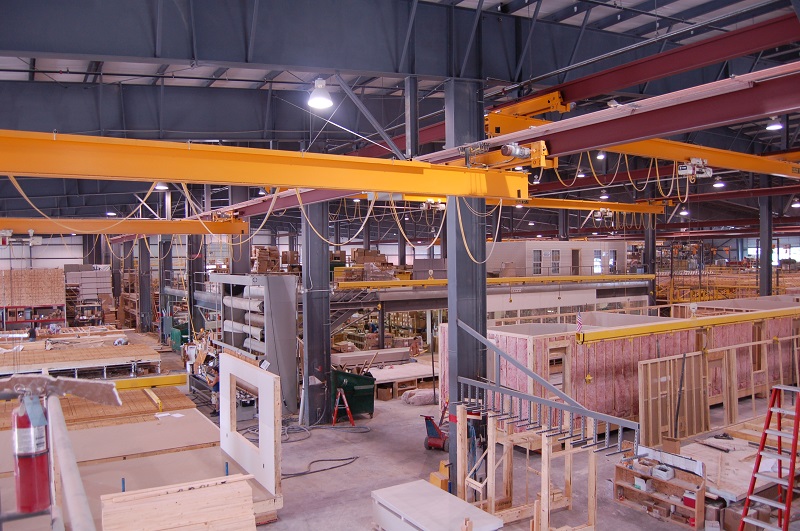Guide to the Construction Loan Draw Process is a short-term loan used to finance the building or renovation of a property. For both builders and homeowners, grasping the draw process is vital. It ensures a smooth flow of funds and timely project completion.
Basics of Construction Loans
Unlike traditional mortgages, which finance already-built homes, construction loans offer temporary funds specifically for creating or updating properties. Their main purpose is to support the initial expenses and ongoing costs of construction. Typically, these loans last for the duration of the build, often ranging from 6 to 18 months.
What is the Draw Process?
The draw process refers to the method of releasing funds in stages during construction. Instead of getting all the money upfront, borrowers receive portions as specific project milestones are met. This system safeguards the lender by ensuring their money is used appropriately and offers borrowers a structured way to finance the build. Inspections play a crucial role here. Before each draw, a check is typically done to verify that the previous stage’s work meets set standards. This ensures quality and adherence to project timelines.
Construction Loan Draw Process Step-by-Step
Imagine the construction loan draw process as a series of choreographed movements, each step bringing the project closer to fruition. It’s a dance of paperwork, assessments, and approvals that ensures the right resources flow at the right time, just like dancers moving in perfect harmony. Let’s take the spotlight on the first act: the Initial Draw.
Phases of the Draw Process

Loan Approval and Initial Draw Once a construction loan gets approved, the first amount is released to jumpstart the project. This initial draw typically covers foundation work, permits, and other starting costs.
Subsequent Draws As building progresses, additional funds are disbursed. The release of these amounts depends on certain criteria being met, such as the completion of the framing or the roofing. At each key milestone, a new draw becomes accessible to continue the work seamlessly.
Final Draw and Project Completion The last payment stands apart from earlier ones. It’s released only after the entire project is finished and inspected rigorously. This thorough check ensures that all work meets the set criteria and that the property is ready for occupancy.
Key Players Involved
The Borrower The borrower, whether a homeowner or developer, plays a central role. They must understand the terms, ensure the project stays on track, and communicate with the lender about progress and any potential hiccups.
The Lender Lenders oversee the financial side. They keep a close eye on the project’s progress, releasing funds at set milestones. Their main goal is to ensure their investment is being used wisely and securely.
Inspectors These professionals step in at crucial moments. Before each draw, they check the quality and completeness of the work done, ensuring it meets all agreed-upon standards.
Contractors and Builders The backbone of the project. They carry out the actual building tasks and must keep to the project’s schedule. When they achieve a milestone, they request the next draw to finance the upcoming phase of the project.
Common Challenges and How to Address Them
Delays in Construction Delays can push back the release of funds, affecting the project’s cash flow. Addressing this requires clear communication between all parties. Any potential delay should be flagged early so everyone can adjust plans accordingly.
Milestone Disagreements Sometimes, borrowers and builders might not see eye-to-eye on whether a milestone has been fully met. Resolving this involves revisiting the initial agreement, possibly with third-party mediation, to come to a consensus.
Keeping the Draw Process Smooth To ensure a smooth draw process:
- Maintain open lines of communication between all parties.
- Keep meticulous records of work done and funds used.
- Always refer back to the initial loan agreement for clarity.
Employing these best practices minimizes misunderstandings and keeps the construction moving forward efficiently.
Tips for Borrowers and Builders

Clear Communication Both borrowers and builders benefit from open dialogue. Discussing progress, potential issues, and next steps ensures everyone is aligned and can act proactively.
Detailed Records It’s essential to track every detail, from labor hours to materials used. A well-organized record not only supports draw requests but also helps in addressing any discrepancies.
Know the Loan Agreement Understanding the fine print avoids future surprises. Both borrowers and builders should be familiar with all conditions, ensuring a streamlined draw process and reducing the risk of disagreements.
Converting Construction Loans to Permanent Financing
The Transition Once the construction completes, the short-term construction loan typically transitions into a long-term mortgage. This conversion usually happens automatically, especially if prearranged with the lender at the beginning.
Benefits of Traditional Mortgage Switching to a regular mortgage offers stability with fixed monthly payments and often lower interest rates. It provides homeowners a long-term financial plan without the uncertainties that come with construction finance.
Conversion Process For this shift, lenders usually require:
- A final inspection to ensure construction adheres to agreed plans.
- Updated financial information from the borrower.
- A confirmation that no liens exist on the property.
Case Studies
In the theater of construction loan draw process , case studies provide real-world scripts that illuminate both success stories and cautionary tales. These stories unfold in the form of successful processes, challenges faced, and lessons learned. Let’s step into the world of construction projects and explore these case studies.
Encore Performances: The Success Stories
Every theatrical performance aspires for a standing ovation, a testament to its brilliance. Similarly, successful construction loan draw process are the projects that set the gold standard. They exemplify perfection in planning, precision in execution, and unparalleled collaboration. These tales are not just about financial transactions and building structures; they celebrate the choreographed dance of mutual trust, clear communication, and foresight. They are the masterpieces that inspire others to strive for excellence.
Intermissions and Improvisations: Navigating the Hiccups
No show is without its fair share of backstage chaos. Just as actors sometimes fumble lines or face technical glitches, construction projects too encounter unexpected challenges. These tales of trials and tribulations highlight the imperfections, the hurdles, and most importantly, the resilience. From sudden budget overruns to disputes that seemed insurmountable, these stories capture the raw reality. Yet, each challenge faced offers invaluable lessons, prompting better strategies, enhanced communication, and more effective contingency plans. They remind us that even in chaos, there’s an opportunity to grow, adapt, and shine brighter.
Behind the Curtain: Illuminating the Process with Real-World Tales
Real-world examples offer a candid backstage pass to the intricate ballet of construction projects. These narratives shed light on the nitty-gritty, the decisions made at every juncture, and the rationale behind them. By delving deep into actual projects, we gain insights into the intricate web of decisions, interactions, and reactions that shape outcomes. We see the role of documentation in ensuring every stakeholder stays on the same page, the magic of open communication in resolving potential disputes, and the importance of honoring every clause in loan agreements. These tales, rich with details, offer a tangible reference, a guidebook brimming with anecdotes, lessons, and strategies that pave the way for future successes.
Conclusion
Understanding the draw process is more than just a formality; it’s the backbone of ensuring smooth construction progress. With knowledge comes empowerment, enabling borrowers and builders to navigate the complexities with confidence. As you venture into construction financing, always seek expert counsel. Prioritize clarity at every step to build not just structures, but lasting financial stability and peace of mind.





